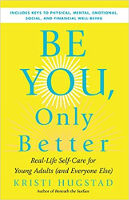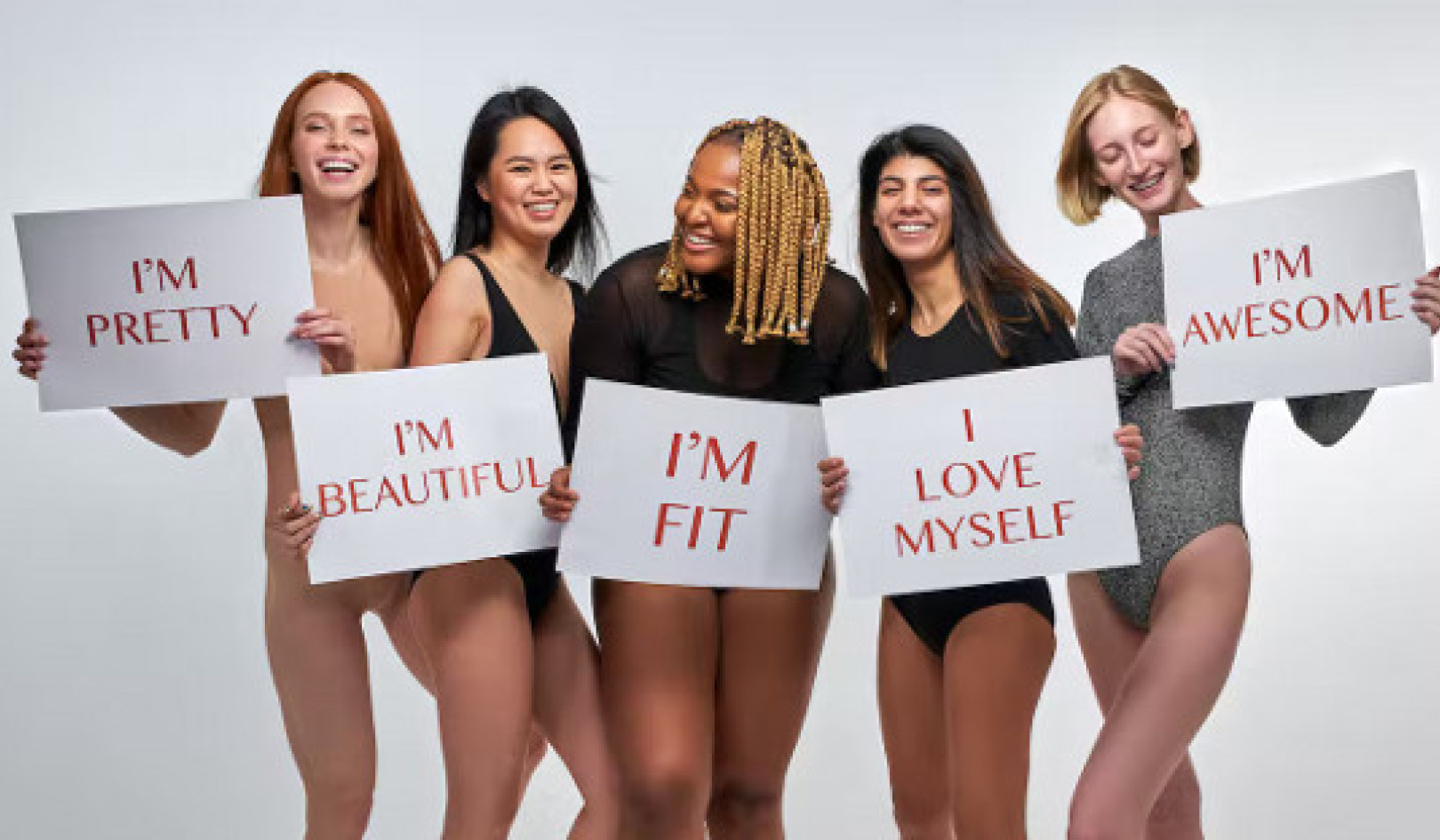
Image by Matan Ray Vizel
It’s not the latest trend. It’s not a hashtag on social media. And it’s certainly not selfish. Self-care is an incredibly important part of your physical and mental health. The better you nurture yourself, the better equipped you will be to enjoy your life, reach your goals, and help and support others.
Self-care isn’t just a to-do list, either. Stressing yourself out about what you should be doing undermines the whole point — self-care is focusing on what you can control by identifying your needs in real time and taking action to meet them. It’s important to check in with yourself several times throughout the day and ask questions like:
- How am I feeling?
- What can I do to feel better?
- How can I help others?
- What areas in my life need nurturing?
- How can I handle my stress in the present moment?
What Self-Care Looks Like
Here’s what self-care looks like in a situation most of us can relate to — a stressful, hectic morning. Let’s say you oversleep and don’t have time to shower before school or you’ll be late. Rather than charging through the house panicked and stressed-out, snapping at anyone who might be around, you take a second to breathe. You stop and think about how you can make the day work for you — and which of your current needs are most important.
Since you know your stress will escalate and your mood will crash if you’re hungry all morning, you eat breakfast. However, this doesn’t leave you with enough time for a shower, so you wash up quickly and dress extra nice. These simple choices help you to not start your day stressed-out.
The Key To Self-Care: Introspection
When you practice self-care, rather than surrender to a “bad day,” you set a positive tone for the hours ahead. You take control over how you respond to the situation. The key to self-care is introspection — resisting the urge to react right away and instead taking the time to reflect and make a plan.
If a plan doesn’t come easily, you continue to pause and breathe, allowing your heart rate to return to normal so you can think clearly. To reduce stress, you remind yourself that the current situation is only temporary and envision a positive solution to your problem.
Of course, self-care looks different to each of us and can vary day to day — there’s no one-size-fits-all formula. That said, here’s one principle that helps everyone master self-care: making the time and effort to invest in your overall wellness, which includes the following five areas.
Five Types of Self-Care
There are five main types of self-care: physical, emotional, social, mental, and financial. Depending on your needs at any particular time, you may need to focus on one or two types more than others.
1. Physical
When someone mentions self-care, many think first of taking care of their physical body, and this is incredibly important for both physical and mental health. However, this doesn’t necessarily mean committing to a vigorous exercise program — but if you do, that’s great!
The key to physical self-care is finding exertion and exercise you enjoy — whether that’s yoga or hiking; dancing, strength training, or cycling; or best of all, a combination of several activities. In addition, good nutrition — like eating more fruits and vegetables, cutting out sugar, and drinking plenty of water — is an important component of physical self-care.
2. Emotional
Emotional self-care isn’t about controlling your emotions. Good self-care means becoming more in sync with your emotions and allowing yourself to feel them. You let yourself laugh, cry, get angry — and feel exactly what you’re feeling rather than ignoring or stifling your emotions.
Teaching yourself to respect your emotions empowers you to have greater compassion — for yourself and others. Emotional self-care means being more mindful of the situations and thinking patterns that trigger negative emotions. Like every aspect of self-care, recognizing and respecting your emotions takes time and practice.
3. Social
We all need social connections and a support system of people we trust. Social self-care means spending time with loved ones, hanging out with friends, being part of a community, and pursuing a hobby or interest with others who share your passion. Positive feelings are contagious.
Since we all have different social comfort levels — some consider themselves introverts and some extroverts — social self-care looks different for everyone. But here’s the bottom line: Make an effort to include happy people in your life. Happy people are contagious, and spending time with them can help you feel happier, too.
4. Mental
The way you think and what you think about greatly influence your sense of well-being. Mental self-care is all about keeping your mind sharp. In many ways, your brain is a muscle that requires activity and exercise to grow and develop.
Mental self-care includes activities that stimulate your mind and your intellect, like reading, solving puzzles, playing chess, writing, studying, or learning a new language. Whether you’re attending school or not, keep your mind constantly learning and growing.
5. Financial
Money isn’t everything, but financial worries or problems can be a significant cause of stress and anxiety, which in turn affects your overall wellbeing. Financial self-care boils down to three simple steps to help you manage your finances:
* increase your awareness of how you manage your money;
* make a financial plan, which provides a sense of control; and
* prioritize your expenses and stay on top of them.
By practicing financial self-care, even if it means spending less, you avoid the stress and anxiety that come from mismanaging money or out-of-control debt.
What the Science Says
Nurturing yourself in these areas won’t simply make you feel better, it will change your thinking and rewire your brain! That’s because your brain releases different types of “feel-good” chemicals when you engage in self-care activities. By adopting healthy habits, you trigger these “happy hormones,” which improve your mood and increase your happiness. This is why self-care gets easier the more you do it. It makes you happier and puts a smile on your face — and on the faces of those who love to see you happy.
What are these feel-good neurochemicals? They include hormones called endorphins, and it is scientifically proven that self-care practices increase endorphin levels in the brain. Endorphins have the same structure as morphine — a drug taken to reduce pain. Our body produces endorphins when we exercise, meditate, listen to music, eat chocolate, laugh, and have sex.
Serotonin is another hormone that regulates mood. Exercise not only increases endorphin levels but also increases serotonin levels, which is why people say that exercise can improve our mood. Recent studies have shown that exercise is so effective at this that it can be used to treat some forms of depression. Of course, don’t expect pharmaceutical companies to advertise the fact that some of our best medicine is free. Another way to naturally increase serotonin levels is through sunlight — so imagine what exercising outdoors under the sun can do!
The precursor to serotonin is tryptophan, but it’s harder to improve your mood by increasing tryptophan. Purified tryptophan is available as a drug in some countries, like Canada, and this has been shown to increase serotonin levels. But eating tryptophan-rich foods like milk usually doesn’t, since you need to consume a whole lot of them to affect serotonin levels.
Dopamine, another so-called happy hormone, is released in response to rewarding human activity and is linked to reinforcement and motivation. In fact, dopamine is associated more with the anticipation of feeling happy than with happiness itself. It is the hormone that keeps you going when you are trying to reach a goal — whether that’s finishing a marathon, getting an A on an exam, or making the football team.
Increasing dopamine is pretty simple. In one scientific study using brain scans, researchers compared dopamine transmission in the brains of people listening to music they felt neutral about and to music they loved. The study found that dopamine levels increased by 90 percent when participants listened to music they loved.
Another hormone that affects our mental and emotional health is oxytocin. Oxytocin levels rise with physical affection like kissing, cuddling, and sex, and they also increase during childbirth, breastfeeding, and strong parent-child bonding. Oxytocin speaks to our human need for physical, social connection.
Science tells us that oxytocin doesn’t simply respond to pleasurable situations — it requires physical connections. We know this because spending time in the virtual world — while it might be pleasurable — actually decreases oxytocin levels. This hormone requires meaningful social relationships — just like we do.
Copyright 2021. All Rights Reserved.
Reprinted with permission of the publisher,
New World Library. www.newworldlibrary.com.
Article Source
Be You, Only Better: Real-Life Self-Care for Young Adults (and Everyone Else)
by Kristi Hugstad
 Along with all the perks of becoming an adult come challenges and the need to learn skills that help you self-regulate as you venture into new experiences. Highlighting five key areas of life — physical, mental, emotional, social, and financial — Be You, Only Better offers science- and experience-backed tools and easy-to-implement techniques for success. Skill-building and self-care practices — such as journaling, getting enough sleep and exercise, embracing nature, managing time and money, and practicing gratitude, mindfulness, and optimism — are presented, and each is illustrated with the story of a real young person. These practices will help you create a resilient foundation for your powerful future. You’ll discover a wonderfully accessible lifeline and a realistically inspiring guide to leading — and loving — your best possible life.
Along with all the perks of becoming an adult come challenges and the need to learn skills that help you self-regulate as you venture into new experiences. Highlighting five key areas of life — physical, mental, emotional, social, and financial — Be You, Only Better offers science- and experience-backed tools and easy-to-implement techniques for success. Skill-building and self-care practices — such as journaling, getting enough sleep and exercise, embracing nature, managing time and money, and practicing gratitude, mindfulness, and optimism — are presented, and each is illustrated with the story of a real young person. These practices will help you create a resilient foundation for your powerful future. You’ll discover a wonderfully accessible lifeline and a realistically inspiring guide to leading — and loving — your best possible life.
For more info and/or to order this book, click here. Also available as a Kindle edition.
About the Author
 Kristi Hugstad, author of Beneath the Surface, is a certified grief recovery specialist, speaker, credentialed health educator, and grief and loss facilitator for recovering addicts. She frequently speaks at high schools and is the host of The Grief Girl podcast and talk radio show.
Kristi Hugstad, author of Beneath the Surface, is a certified grief recovery specialist, speaker, credentialed health educator, and grief and loss facilitator for recovering addicts. She frequently speaks at high schools and is the host of The Grief Girl podcast and talk radio show.
Visit her website at www.thegriefgirl.com



























